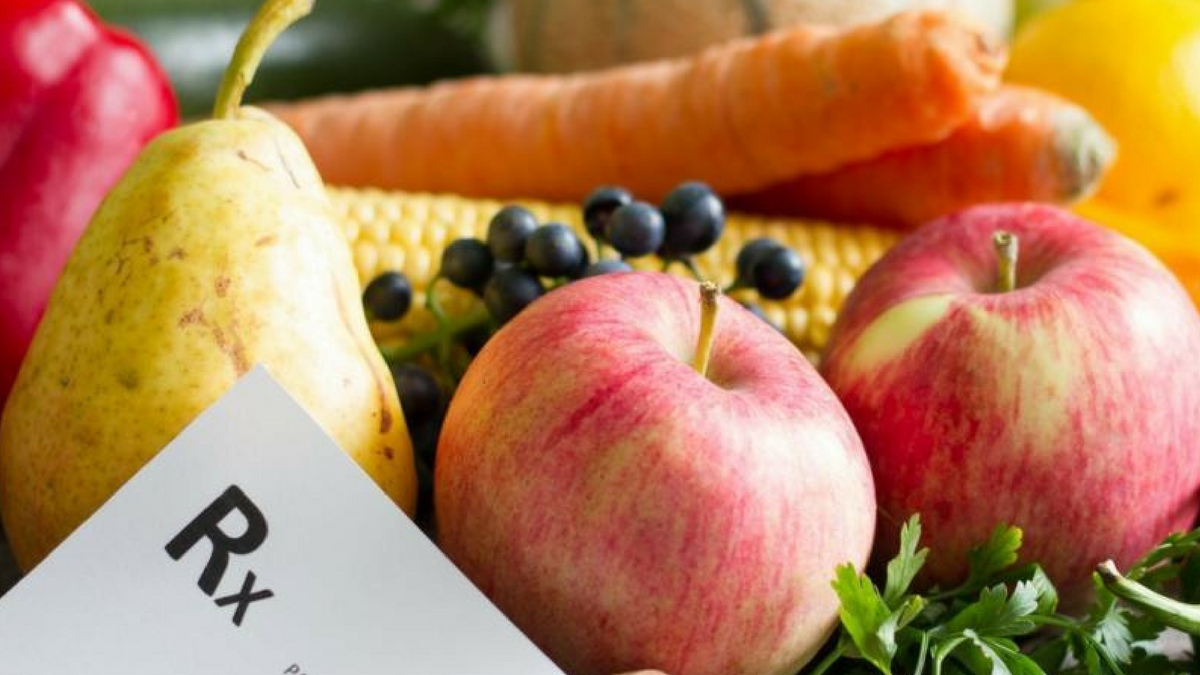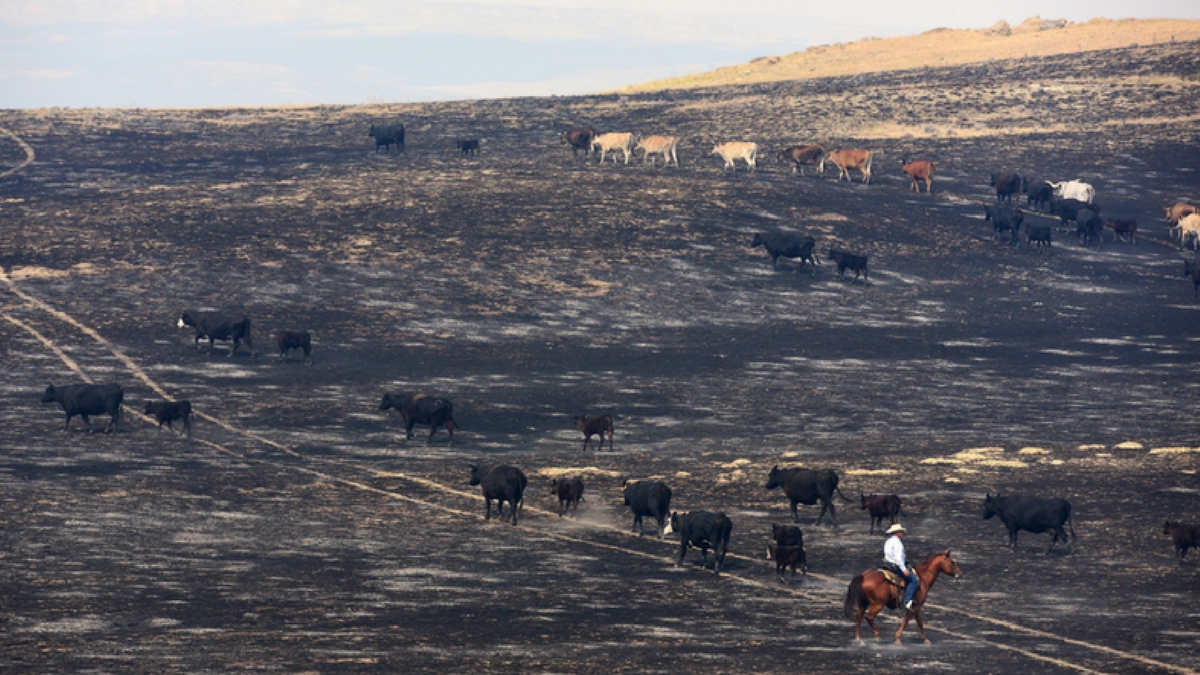Nature has menacing ways of reminding us who has the ultimate upper hand.
Wildfires. Hurricanes. Floods. Droughts. Earthquakes. These powerful natural events can deliver massive destruction and loss of life. Often overlooked by the media and general public are the consequences for agriculture, and all who depend on farming for food and sustenance.
Agricultural impacts from natural events and disasters most commonly include:
• Contamination of water bodies.
• Loss of harvest or livestock.
• Increased susceptibility to disease.
• Destruction of irrigation systems and other agricultural infrastructure.
This article looks at many of the major natural disasters of 2017 and how these events have impacted farming, from the back-to-back powerful hurricanes that have wrecked crops in the Caribbean and the U.S. Gulf Coast and the wildfires that have decimated cattle ranches in the American West to a prolonged, devastating drought destroying crops in Portugal and Spain, and an earthquake in Latin America.
The furies of wind and rain
The 2017 Atlantic hurricane season was extremely destructive and among the costliest on record.
The August National Oceanic and Atmospheric Administration (NOAA) forecast for an above-normal, hyperactive season featuring two to five major hurricanes turned out to be horribly understated.
There were 10 of these ferocious storms during the season, and they all occurred one after another, the greatest number of consecutive hurricanes since satellites began tracking storms.
Three in particular left trails of devastation from the Dominican Republic and Puerto Rico to Florida and Texas: Harvey, Irma and Maria.
Harvey
At 10 p.m. CDT on Aug. 25, a storm of intense ferocity rolled over the Texas Gulf Coast near Corpus Christi. Hurricane Harvey arrived, delivered its first blow, bounced back out over the warm waters of the Gulf, regained strength and slammed Texas a second time.
The weather analytics company WeatherBELL estimates that Harvey dumped 27 trillion gallons of rain over Texas and Louisiana during a six-day period. At 51 inches of rainfall, it was a record for the most ever from a tropical storm system in the continental U.S.
Estimates by Moody’s Analytics put eventual total losses from Harvey alone at approximately $100 billion.
Among the major casualties was what had been shaping up as one of the Texas cotton industry’s most promising years in recent times.
“The cotton crop along the Gulf Coast was exceptional. It really was,” said Russell Boening, Texas Farm Bureau (TFB) president. “Yield-wise, this was going to be one of the best in 10 or 15 years.”
That outlook disintegrated in only hours as Harvey roared inland, destroying at least $100 million in cotton, according to Texas A&M AgriLife Extension Service economists, and perhaps much more, by Boening’s estimate.
The economists peg losses for Lone Star State livestock producers at $93 million, conservatively.
“Livestock were lost and livestock were affected because they were standing in water so long,” said Boening. “They may have survived, but may have some health issues.”

The Wendt Ranch in Bay City, Texas, after Harvey. Credit: The Wendt Ranch.
Adding insult to injury, Harvey’s blow to Texas farmers arrived as grain producers were already dealing with trouble of another sort.
“In Texas, we have really dramatically high levels of fumonisin,” noted Dr. Max Hawkins, nutritionist with the Alltech® Mycotoxin Management team.
The increased presence of fumonisin was a result of hot weather in late June and July followed by a cool, exceptionally wet August.
The fences, barns and animal-handling facilities destroyed in the storm must be rebuilt. And there are concerns about the replacement costs of hay that was destroyed in the high flood waters.
“We are right on the verge of entering winter feeding season, and ranchers will have to find replacement hay that averages $63 per round bale,” said Dr. David Anderson, AgriLife Extension livestock economist in College Station, Texas. “A rancher may typically feed two or more round bales per cow during winter, so even if there isn’t hay available, they will still have to purchase some type of supplemental feed. All of this comes with a hefty price.”
Learning of all the destruction and loss early on the morning following Harvey’s landfall, Alltech’s founder and president, Dr. Pearse Lyons, issued a company-wide call-to-action on behalf of the Texans.
When word of this reached Alltech’s Ridley Block Operations managing director Earl Witham, trucks hit the road loaded with $40,000 in feed supplements, bound for the company’s Texas distributors to donate to ranchers in need.
“I just have to say this,” shared Witham. “The day that it happened, the day of the hurricane, I got a call, and they said, ‘Dr. Lyons wants to do something right now.’ So, it was driven from the very top that Alltech was going to get involved; we were going to volunteer people; we were going to donate product; we were going to give as much in funds as we could. It’s a good feeling to work for a gentleman who is that giving.”
Dr. Lyons' directive also resulted in the launch of "Hope After Harvey,” an effort to raise support funds for Texas farmers and ranchers.
Alltech committed to match donations made to its nonprofit Alltech ACE Foundation. As a result, company representatives presented the Texas Farm Bureau’s Agriculture Research and Education Foundation with a $42,607.12 check. The funds are providing support and relief to Texas farmers and ranchers who were affected by Hurricane Harvey.

Alltech’s “Hope After Harvey” campaign resulted in a donation of $42,607.12 to Texas Farm Bureau’s Hurricane Harvey Relief Fund. Left to right: Brian Lawless, North America brand manager, Alltech; Si Cook, Texas Farm Bureau executive director/chief operating officer; Lee Pritchard, account manager for Ridley Block Operations, an Alltech company; Neil Walter, Texas Farm Bureau District 8 state director; and Randy Asher, regional sales manager for Alltech. Credit: Texas Farm Bureau
Boening said the hurricane was a tough blow to the Texas agricultural community, but farmers are resilient people.
“If you’ve been a cotton farmer, more than likely you’re going to continue to be a cotton farmer, and if you’ve raised livestock, even though you might’ve had a setback from this storm, you’re probably going to continue raising livestock,” he said.
Irma
One thousand miles eastward from the Texas coast across the Gulf of Mexico, the citrus growers of Florida were already struggling with crop losses due to the bacterial disease citrus huanglongbing(HLB). Also known as “yellow dragon” or “greening” disease, HLB had infected all 32 of the state’s growing citrus counties. There is no known cure.
But things finally seemed to be looking up in August when Dr. Elizabeth Steger of the Kissimmee-based Citrus Consulting International — whose crop yield forecasts have become something of a gold standard among Florida citrus growers — predicted a 10 percent increase in yield over 2016.
That forecast was dashed on Sept. 10 when Hurricane Irma struck the coast of southern Florida and tied with the 1935 Labor Day hurricane as the strongest ever to make landfall in the Atlantic basin. The huge storm proceeded to barrel north, straight up the peninsula, raking citrus groves in Florida's top-producing citrus counties: DeSoto, Polk, Hendry, Highlands, Hardee and Collier.

Citrus groves in Florida remain under flood waters Sept. 13 after Hurricane Irma. Credit: Florida Department of Agriculture and Consumer Services
Now, instead of the long-awaited growth that had been predicted, the Sunshine State’s citrus growers anticipate producing 35 percent less for 2017 than in the year before, according to Jim Ellis, financial examiner/analyst with the Florida Department of Agriculture and Consumer Services.
And the impact doesn’t stop at grove’s edge.
Ellis noted that Florida is home to 18 fruit packing houses. In 2016, the industry packed 12 million 4/5 bushel cartons. He estimates that there is only enough citrus remaining after the storms of 2017 to fill 6 million cartons. Three packing houses can process that entire crop, he said, adding that the state’s fruit processors will pack an estimated 50 million boxes this year —down by 20 million boxes from 2016.
“The industry is crippled now,” said Ellis. “The packing and processing plants can’t run at full capacity, so there is a direct impact on labor and profits.”
Maria
Irma was soon followed in late September by Hurricane Maria, sweeping across the Caribbean, smashing Puerto Rico with Category 4 winds and in only hours wiping out about 80 percent of the U.S. territory’s crop value, which had only weeks before been hit hard by Irma. The island suffered a loss of $780 million in agriculture yields, according to preliminary estimates by the Puerto Rico Department of Agriculture.
Also taking hits from Maria were Guadeloupe, Martinique and Dominica, where crop losses were estimated at between 90 and 100 percent, decimating small-scale agriculture.
Hurricane Katia had in the meantime struck Mexico on Sept. 8, dumping 10 to 15 inches of rain on northern Veracruz, eastern Hidalgo and Puebla. The winds and flooding left damage across 200,000 hectares of maize, pineapple, papaya, banana and other crops.
Cyclones and typhoons
Growers and producers in the Pacific basin were experiencing their own struggles with an intense cyclone season.
As 2017 dawned, nearly 67,000 farmers in the Philippines were only beginning to take stock of damages wrought by Typhoon Nina. The storm struck just days before the beginning of the new year. Nina’s destruction of Philippine rice farms, coconut groves, fisheries and livestock operations topped P4 billion ($80 million USD) in losses, according to the country’s department of agriculture.

Madagascar vanilla beans. Credit: Shutterstock
In March, Cyclone Enawo slammed Madagascar, exporter of between 75 percent and 85 percent of the world’s vanilla beans. Many vanilla farms across the island nation were lost. In certain areas, the tree canopy that typically shades vanilla vines and serves as a scaffold for them to climb was either severely damaged or destroyed by the storm, placing the vines and vanilla pods at greater risk of UV damage from direct sun exposure. Pastry chefs and ice cream shops the world over have been forced to get creative. Vanilla pods are now trading at an all-time high, according to Craig Nielsen of the U.S. vanilla and flavorings group Nielsen-Massey.
“Inventories were already depleted, and now we have the damage caused by the cyclone,” Nielsen-Massey told Financial Times. “It will be a tough time [for the vanilla market] for the next couple of years.”
Cyclone Debbie was, at the time, inundating farms in Australia, leaving heavy damage among tomato, capsicum, sugarcane and eggplant producers. Tree crops such as mangos, pawpaw, custard apples and lychees also suffered heavy damage, according to reports.
Cyclone Ockhi wiped out banana plantations and rice farms in western India.
Heavy early December rains and severe flooding hit rice production in Bangladesh, and agricultural damages from major storms was also reported from Malaysia, Thailand and Indonesia to Greece and Albania.
Send some of that water our way!
Even as many of the world’s farmers slogged through high waters to rescue or defend their crops and livestock, their counterparts in other regions of the planet suffered the opposite dilemma: severe drought.
One of the worst dry spells in recent decades is devastating southern European crops. Just this year, the damage is estimated to top €1 billion.
In Italy, around 30 percent less rain has fallen in 2017 compared to last year. Grains have been especially badly damaged by the lack of water and the intense heat.
The drought now threatens to reduce cereal production in Italy and parts of Spain to its lowest level in at least 20 years and hit other regional crops, including olives and almonds.
Spain is living through its worst drought in decades. Reservoirs have dried up. Corn, potato, beets and bean crops have died. Wildfires have wrought destruction, according to Euronews.
Some farmers have said they won't even harvest this year because the overall result would be so low it wouldn't be worth the money.
Rains have barely brought relief from a prolonged drought that is affecting the Horn of Africa region. Up to 75 percent of livestock has died in the worst affected areas, according to watchers.NEWS.
Sri Lanka has suffered from prolonged lack of rain. The charity Save the Children reports the country’s worst harvest in 40 years.
And in an ironic prelude to the hurricanes that slammed the state later in the year, Florida endured an extreme dry spell until June when just seven days of heavy rainfall, record-breaking in places, pulled the entire state out of extreme drought conditions.
Even so, Florida experienced extreme heat for the entire month of July, setting a record for hottest July. Only a single day had a high temperature below 90.
Fire!
A severe heat wave that brought record temperatures across the western United States exacerbated North American wildfires, which by July had spread across six U.S. states and into British Columbia, Canada.
More than 47,000 wildfires burned more than 8 million acres across the country, according to CBS News.
Late winter of 2017 brought flames to Colorado, Kansas, Oklahoma and Texas. Thousands of cattle and hogs were lost, according to Alltech’s Global Supply Chain Weekly Market Notes.
Some 1,500 square miles of agricultural grazing land burned in early March. Thousands of cattle perished, and countless homes, buildings and fences were destroyed as windswept flames scorched pastures, reducing generations of hard work and dreams to ashes. In several cases, ranchers died trying to save livestock.
Alltech’s Hubbard Feeds and Ridley Block Operations both teamed up to provide livestock feed relief to fire-stricken cattle producers and ranchers in the four afflicted states.
In April, the Market Notes reported that the U.S. Department of Agriculture had opened emergency grazing lands previously protected under the Conservation Reserve Program in these states.
By summer, the thick, black smoke and red-hot, wind-fueled flames were consuming hundreds of thousands of acres in six Western states.

Taylor Brown herds recovered cattle across a charred pasture on L.O. Bar Ranch to water and food near Sand Springs, Montana. Credit: Billings Gazette | Rebecca Noble
Among them was drought-stricken Montana.
Multiple wildfires blackened over 1 million acres throughout the state. The most devastating to ranchers, the Lodgepole Complex fire in eastern Montana, impacted over 270,000 acres.

U.S. Highway 200 is surrounded by blackened earth in July after the Lodgepole Complex fire burned through the area. Credit: Billings Gazette | Casey Page
“The Lodgepole Complex fires didn't just wipe out this year; they wiped out years to come,” the Billings Gazette reported on July 30. “Many ranchers will likely have to sell off cattle to survive — losing years of carefully honed genetics.
“Other ranchers will have to wait until 2019 to see new calves reach market age — and who knows how they'll make it until then,” it continued. “And for new, young ranchers, the fires may have wiped out their budding businesses before they even got on their feet.”
The farming community rose to the occasion. Jerry Beggar, general manager of Alltech’s Montana-based WestFeeds, said his company joined the effort by donating supplies of feed supplements.
“We’re part of a community out here and care about everybody,” he said. “With all of the expenses they’re going to incur, we tried to lighten up the load a little bit.”
By Aug. 7, Seattle matched its all-time record for consecutive days without precipitation.
Oregon and Washington, the states that produce most of the nation’s apples, pears, cherries and hops (for brewing beer), were battling record blazes. Farmworkers were having difficulty getting out into the orchards, vineyards and fields due to choking smoke.
After California, Oregon and Washington have the highest number of wineries in the country. Together, the industry brings in more than $5 billion a year to the Pacific Northwest. But with wildfires becoming all too common in the region, growers are worried. The effects of wildfire smoke are being debated in wine circles across the West Coast.
October brought even more Western wildfires, this time decimating vineyards and wineries in California’s famed wine country.
According to San Francisco Chronicle wine writer Esther Mobley, “Depending on how widespread the destruction of vines is across wine country, it could mark a severe shortage of grapes for years to come. When vineyards are planted, it can take three to five years for them to bear fruit. Additionally, most Napa and Sonoma wineries hold at least three vintages of wine in barrel at any given time, not to mention the large inventory of bottles that many wineries hold back for years.”
In British Columbia, the 2017 fire season has left behind the largest total area burnt in a fire season in recorded history: more than 1 million acres.
“People have not only lost homes and buildings, but there’s also dead or injured cattle and the long-term health effects to some cattle,” Cody Cox, Cariboo Cattlemen’s Association president, told Business Vancouver. “The ranchers have lost miles and miles of fences; their summer and fall pastures that sustain the cattle until they sell them in the fall are burned up and gone. Some have lost their hay crops, their bales — it goes on and on.”
Shaken
When we think of damage from earthquakes, we tend to default to urban settings. Although risks are normally associated with densely populated cities, the effects on farming communities also can be devastating. Earthquakes sometimes trigger tsunamis, landslides and occasionally volcanic activity. The results can include injury and loss of family members and workforce, damage to irrigation systems, loss of crops and livestock, and damage to infrastructure.
A powerful Sept. 7 earthquake rumbling through more than a dozen states in Mexico damaged 138,000 hectares of crops, including bananas, coffee and corn, Fruitnet.com reported. No one could have foreseen that Mexico was in for a double whammy: 24 hours later, Hurricane Katia roared ashore.
Necessity is the mother of invention
While meteorology is delivering ever-improving forecast technologies, we are still never fully prepared for the unpredictable realities of powerful weather-related events. These include the severe wind and flooding damages wrought by hurricanes, cyclones and tornadoes, as well as droughts that contribute to wildfires.
From the citrus growers of Florida and the cattle ranchers of Montana to the vanilla bean producers of Madagascar and the farmers of southeastern Spain, 2017 has delivered more evidence of the critical agricultural assets and infrastructure that natural disasters often destroy, disrupting production cycles, trade flows and livelihoods.
The number and frequency of natural disasters, along with the associated impact and damage to livelihoods and economies, are increasing significantly, according to The impact of disasters on agriculture and food security,” a comprehensive report by the United Nations’ Food and Agriculture Organization.
Food security is impacted and value chains are disrupted. Such disasters may slow overall economic growth, especially where agriculture and food production still account for a large share of gross domestic product and employment.
Many efforts are underway at national and international levels to improve agriculture’s ability to anticipate, prepare for and recover from these events.
However, vital systematic data and information on the impact of disasters and hazardous events in agriculture and its sub-sectors — crop, livestock, fisheries, aquaculture and forestry — remain limited. Perhaps this presents a challenge as well as an opportunity for innovation and invention.

























